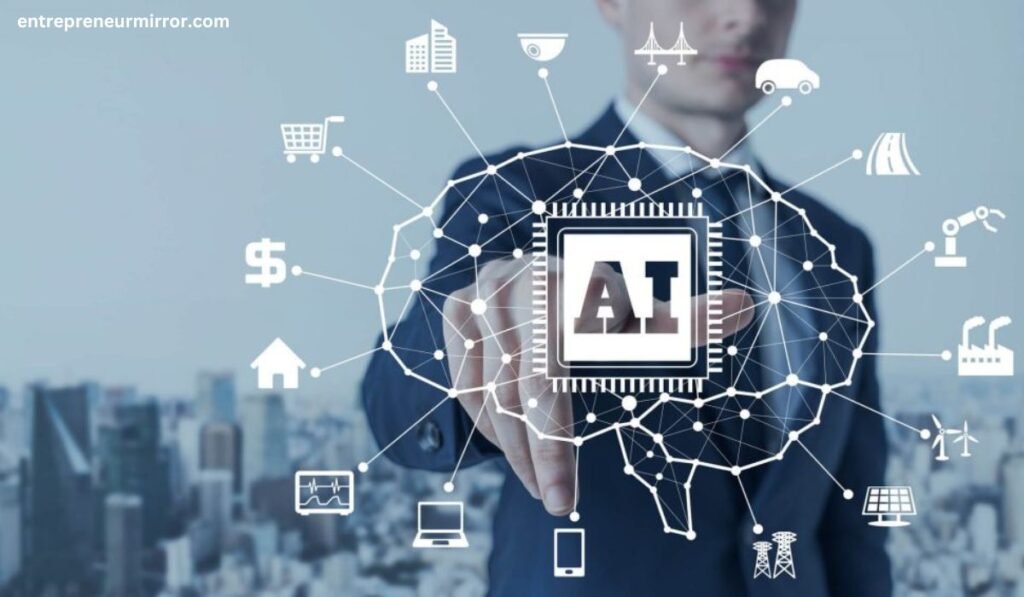In an age of fast-paced technology, AI is one disruptive force that significantly changes how we live, work, or communicate. When discussing AI explanation, AI generally refers to imitating human intelligent processes by machines, primarily implemented on computer systems. The technology, which includes learning, reasoning, and self-correction, is helpful and can provide solutions that were once considered to be only human intellects.
Artificial intelligence functioning, ranges from intelligent assistants to predictive analytics, with their capabilities being endlessly diverse, which is why AI is becoming an integral part of life today. This post provides the AI explanation, gaining the AI basics of how artificial intelligence operates, and thus introduces it as a topic for deeper study involving its impact and future.
Core Elements of AI -AI Basics
AI stems from algorithms and data. These algorithms allow a computer to do things that generally expect human intellect to perform. The key elements include:
- Machine Learning: AI learns from data and can automatically spot patterns and decisions, requiring minimal human supervision.
- Natural Language Processing (NLP): AI comprehends and can communicate in human language, which means it is capable of reading, relating, and responding.
- Robotics: AI governs and operates robots to carry out work from simple to complex and in the most precise and rapid way.
Artificial Intelligence Functioning
The functioning of artificial intelligence can be broken down into a few fundamental steps:
- Data Collection: The AI systems collect large amounts of data from different resources.
- Data Processing: After harvesting the data, the information is processed and analyzed to find trends and useful insights.
- Learning: AI algorithms learn from the data, which makes them more accurate and efficient with time, enabling them to be used more effectively.
- Decision Making: Given the analysis, AI has outcomes or gets the results, determined by or causing the actions without human intervention.
Applications and Impact
AI’s influence spans multiple sectors, including:
- Healthcare: Ranging from diagnostics to individualized medicine.
- Finance: In fraud detection and automated trading, for instance.
- Manufacturing: By employing predictive maintenance and supply chain improvement.
- Entertainment: Tailoring content proposals on streaming sites.
Why AI Matters: AI Explanation in Detail
- Efficiency and Accuracy: AI can work with less time to complete and have fewer mistakes than humans.
- Predictive Capabilities: It tracks the trajectories and activities, thus providing the basis for strategic planning.
- Automation: The AI replaces the humans in completing the tedious and recurring tasks, leaving the humans free to engage in creative and strategic activities.
Ethical Considerations in AI
Implementing AI raises ethical dilemmas surrounding privacy, security, and the societal influence of automation, among other concerns. As AI systems are increasingly used within our society, the responsibility to use them in such a way that they respect individual rights and promote fairness becomes the key factor. Resolving these ethical concerns, therefore, makes for an AI that is of service to humankind at large with all its human values uncompromised and inequalities not magnified.
The Future of Jobs along with AI
The role of AI in the job market is both beneficial and challenging. However, AI automation promises efficiency and cost-effectiveness, but only with the threat of job losses in some sectors. Nevertheless, AI develops new career vacancies in tech, data analysis, and AI ethics management. The future of work with AI revolves around skills adaption and lawmaking targeted at the agile transformation of occupations where AI will become a dominant factor.
AI and Environmental Sustainability
AI can have a significant share of environmental sustainability. AI can help manage natural resources using data analysis and predictive modeling, thus improving energy consumption efficiency and avoiding wastage. AI-integrated solutions in the agriculture, water management, and renewable energy sectors demonstrate AI’s potential in driving sustainable development, hence AI’s role in combatting climate change.
Bridging the AI Divide
An issue of the global AI divide has to be raised because improvements in AI technology distribution may not be available to all countries, regions, and communities. It calls for fostering shared prosperity by requiring all pay equity. Efforts to democratize AI through education, open-source technologies, and international cooperation should be emphasized as essential elements for building a future of technology that is more equal.
Conclusion
AI explanation is simple. AI is not a mere fashionable term but a formative technology that redesigns the world around us. Through the comprehension of the Inexplanation and its grounds, from machine learning to natural language processing, one could recognize why it is a game-changing technology. As artificial intelligence development continues, its role in improving productivity, decision-making, and innovation functionality becomes a key point. Driving AI adoption does not merely mean using technology as a tool; it means opening doors to unlimited opportunities in the future.
Also Read:-

